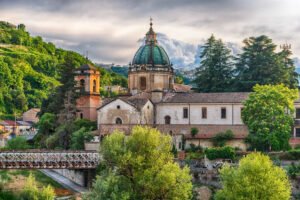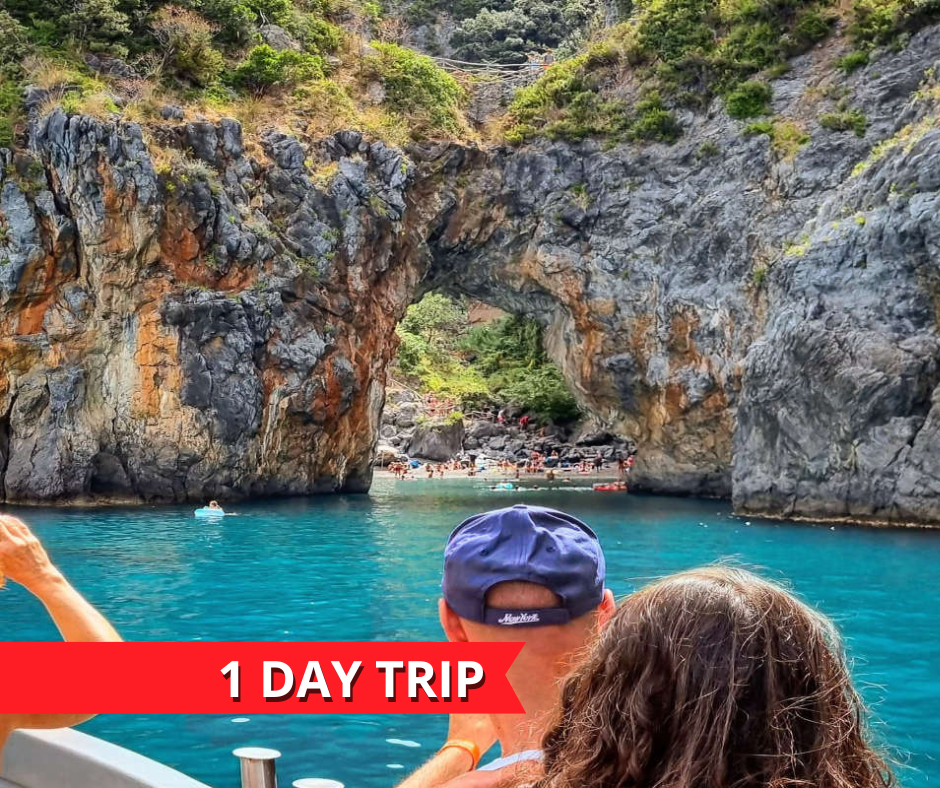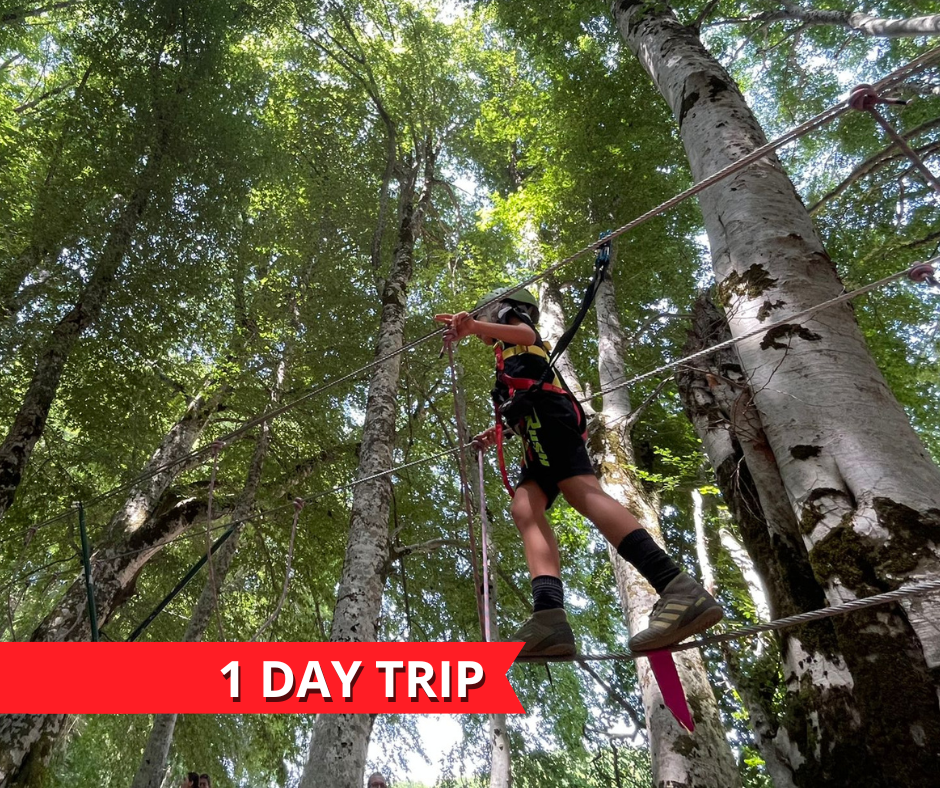"I cross the San Domenico bridge at the point where the two rivers converge: the Busento and the Crati, which, like two arms, hold in their bight the medieval city that rises like a pyramid along a hill, towards the imposing Arab-Norman castle [...] Cosenza was the centre of an enlightened urban civilisation, it joined the French in 1799, it was from time to time Carbonara, Mazzini, patriotic, until the unification of Italy in 1860. And if I recall its past here, it is not just because it is a bookish memory, but because it has left indelible imprints in its monuments and walls.' (Maria Brandon Albini)
Cosenza

Cosenza, also known as the Athens of Calabria - because of its famous past linked to the arts and philosophy - or the City of the Bruzi, is the provincial capital located further north in Calabria. The ancient urban centre is located in the immediate vicinity of the river Crati, on the slope of the Pancrazio hill. Here, it echoes a past rich in medieval references that are reflected in the narrow streets, intersecting alleys and numerous ancient buildings and palaces. The modern city, on the other hand, lies on the plain below and is home to the new settlements. The city, which falls within the territory of the Sila National Park, is surrounded by the mountains of the Coastal Chain, the Sila and the Pollino, conditions that result in an abundance of snow during the winter months, which makes the old centre even more evocative and the modern core very characteristic.
In Cosenza, there are several experiences not to be missed: historic buildings, museums, festivals and lots of culture await every traveller. Of particular interest is the old part of the city, located at the foot of Monte Pancrazio. Walking along Via degli Orefici, where there are still ancient workshops, you will reach Piazza del Duomo, where the Cathedral, built in the 13th century and later restored, houses, among other works, the tomb of Isabella of Aragon. Near Piazza dei Valdesi, then, you can admire the union of the Crati and Busento rivers, where - according to legend - Alaric, King of the Visigoths, who arrived in Cosenza in 410 after sacking Rome, was buried (in a secret spot). Reaching Piazza dei Bruzzi, then, Mimmo Paladino's sculpture awaits you, depicting a large helmet resting on a dark slab: the work refers to the origins of the city linked to the Bruzi people who fought against the Lucanians - on whom they depended - to secure their freedom. On Monte Pancrazio, the highest point of the city, the majestic Norman-Swabian Castle, built by the Normans and restored after an earthquake by Frederick II, is still visible: today the halls, gardens and terraces can be visited. Finally, you cannot miss a walk to Piazza XV Marzo, where you will find the Palazzo del Governo and the famous Accademia Cosentina, dedicated since its 16th century origins to culture and philosophy. The Piazza has at its centre the bronze statue of the philosopher Bernardino Telesio, whose contribution made the Accademia great. But in the vicinity of Cosenza it is also possible to dedicate oneself to excursions and outdoor activities: there are many paths for trekking, mountain biking and horse riding, and in winter, ski lovers can enjoy the snowy slopes of the Sila amidst breathtaking landscapes and unspoilt scenery. Inside are works of art such as the tomb of Queen Isabella of Aragon and the image of the Madonna del Pilerio. In addition to the painting of the Immaculate Conception, the fresco of the Assumption and the precious reliquary cross. Around Piazza Duomo there are steep alleys with gates, arches, subways and old houses. We walk along Via del Seggio and arrive at the Church of San Francesco d'Assisi.
The cuisine you can experience in Cosenza features simple dishes with a full-bodied flavour that harks back to a peasant past strongly linked to the work of the land and local products. A speciality not to be missed is certainly bread baked in a wood-fired oven, among which we find the famous pitta to be enjoyed with various toppings, while during the Christmas period, then, the cuddrurieddri, savoury or sweet fried doughnuts that can also be enjoyed as street food, are a must. Among the typical first courses we find handmade pasta, a speciality shared by many Calabrian villages and towns; pasta and potatoes ara tijeddra, i.e. baked, enriched with tomato sauce, lagane with chickpeas, potato gnocchi (with Sila potatoes) to be served with meat sauce or Sila mushrooms. Finally, we have spaghetti cù a muddrica, that is, with breadcrumbs, and with salted anchovies. The sausages have a long and famous tradition and are excellent accompanied by caciocavallo silano cheese. The second courses are many and varied: one of the most famous dishes is undoubtedly cod Cosentina style seasoned with tomato sauce, potatoes, black olives, peppers and herbs, then we have broccoli rabe with sausage, lamb chops Cosentina style with onion, lard and chilli pepper, and mazzacorde (i.e. lamb or kid offal) Cosentina style. Desserts are also in great variety: at Christmas time we find the 'Turdiddri' fried dumplings covered in honey and the 'Scaliddre' fried sweets in the shape of ladders; the 'Varchiglia' a boat-shaped sweet (hence the name) made with almonds and chocolate. Then we have the 'Chinuliddre' fried shorts stuffed with mostarda and the 'pallone di fichi', with figs baked in the oven and wrapped in leaves to form a small ball: a sweet of peasant origin with a unique flavour.
There are several events to attend in Cosenza, each highlighting particular elements of local history and tradition. In the month of Maro there is the Fera di San Giuseppe, an event of international appeal that brings together hundreds of exhibitors who set up stalls in the main streets of the historic centre. The event lasts about ten days and is enriched by musical performances and entertainment. During the same period is the festival San Giuseppe Rock and the Festa dell'accoglienza, dedicated to the values of hospitality. In April, La Primavera del Cinema Italiano, a film festival, is held, while in May it is the turn of Moda Movie, a project combining the spheres of fashion and cinema, in which fashion designers and young directors are awarded prizes. Then in July there is the Festival delle Invasioni, one of the best-established international events in the Calabria Region. In September there is Gradinate in scena, an event dedicated to fashion in which the steps of via Alimena become a catwalk for fashion shows, enriched with social and cultural themes. Between September and October, there is Le Strade del Paesaggio - Comics Festival, an event full of shows where the protagonists are comics and contemporary art. In October, taste triumphs with the Chocolate Festival, which lasts four days and features several artisan exhibitors and master chocolatiers from all over the world.








